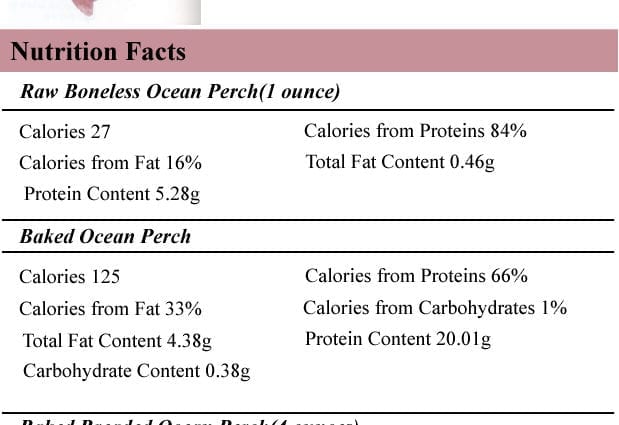Nutritional value and chemical composition.
| Nutrient | Quantity | Norm** | % of the norm in 100 g | % of the norm in 100 kcal | 100% normal |
| Calorie value | 120 kCal | 1684 kCal | 7.1% | 5.9% | 1403 g |
| Proteins | 10.9 g | 76 g | 14.3% | 11.9% | 697 g |
| Fats | 6.6 g | 56 g | 11.8% | 9.8% | 848 g |
| Carbohydrates | 4.2 g | 219 g | 1.9% | 1.6% | 5214 g |
| Alimentary fiber | 0.8 g | 20 g | 4% | 3.3% | 2500 g |
| Water | 74.9 g | 2273 g | 3.3% | 2.8% | 3035 g |
| Ash | 2.5 g | ~ | |||
| Vitamins | |||||
| Vitamin A, RE | 373 μg | 900 μg | 41.4% | 34.5% | 241 g |
| Retinol | 0.015 mg | ~ | |||
| beta Carotene | 2.15 mg | 5 mg | 43% | 35.8% | 233 g |
| Vitamin B1, thiamine | 0.13 mg | 1.5 mg | 8.7% | 7.3% | 1154 g |
| Vitamin B2, riboflavin | 0.08 mg | 1.8 mg | 4.4% | 3.7% | 2250 g |
| Vitamin C, ascorbic | 3.8 mg | 90 mg | 4.2% | 3.5% | 2368 g |
| Vitamin E, alpha tocopherol, TE | 2.6 mg | 15 mg | 17.3% | 14.4% | 577 g |
| Vitamin PP, NE | 3 mg | 20 mg | 15% | 12.5% | 667 g |
| niacin | 0.9 mg | ~ | |||
| Macronutrients | |||||
| Potassium, K | 280 mg | 2500 mg | 11.2% | 9.3% | 893 g |
| Calcium, Ca | 92 mg | 1000 mg | 9.2% | 7.7% | 1087 g |
| Magnesium, Mg | 43 mg | 400 mg | 10.8% | 9% | 930 g |
| Sodium, Na | 732 mg | 1300 mg | 56.3% | 46.9% | 178 g |
| Phosphorus, P | 154 mg | 800 mg | 19.3% | 16.1% | 519 g |
| Trace Elements | |||||
| Iron, Fe | 1 mg | 18 mg | 5.6% | 4.7% | 1800 g |
| Digestible carbohydrates | |||||
| Starch and dextrins | 0.2 g | ~ | |||
| Mono- and disaccharides (sugars) | 4 g | max 100 г | |||
| Sterols | |||||
| Cholesterol | 33 mg | max 300 mg | |||
| Saturated fatty acids | |||||
| Saturated fatty acids | 0.9 g | max 18.7 г |
The energy value is 120 kcal.
- Vitamin A is responsible for normal development, reproductive function, skin and eye health, and maintaining immunity.
- B-carotene is provitamin A and has antioxidant properties. 6 mcg of beta-carotene is equivalent to 1 mcg of vitamin A.
- Vitamin E possesses antioxidant properties, is necessary for the functioning of the gonads, heart muscle, is a universal stabilizer of cell membranes. With a deficiency of vitamin E, hemolysis of erythrocytes and neurological disorders are observed.
- Vitamin PP participates in redox reactions of energy metabolism. Insufficient vitamin intake is accompanied by disruption of the normal state of the skin, gastrointestinal tract and nervous system.
- potassium is the main intracellular ion that takes part in the regulation of water, acid and electrolyte balance, participates in the processes of nerve impulses, pressure regulation.
- Phosphorus takes part in many physiological processes, including energy metabolism, regulates acid-base balance, is a part of phospholipids, nucleotides and nucleic acids, is necessary for the mineralization of bones and teeth. Deficiency leads to anorexia, anemia, rickets.
Energy value, or calorie content Is the amount of energy released in the human body from food during digestion. The energy value of a product is measured in kilo-calories (kcal) or kilo-joules (kJ) per 100 grams. product. The kilocalorie used to measure the energy value of food is also called the “food calorie,” so the kilo prefix is often omitted when specifying calories in (kilo) calories. You can see detailed energy tables for Russian products.
The nutritional value – the content of carbohydrates, fats and proteins in the product.
Nutritional value of a food product – a set of properties of a food product, in the presence of which the physiological needs of a person for the necessary substances and energy are satisfied.
Vitamins, organic substances required in small quantities in the diet of both humans and most vertebrates. Vitamins are usually synthesized by plants rather than animals. The daily human need for vitamins is only a few milligrams or micrograms. Unlike inorganic substances, vitamins are destroyed by strong heating. Many vitamins are unstable and “lost” during cooking or food processing.










